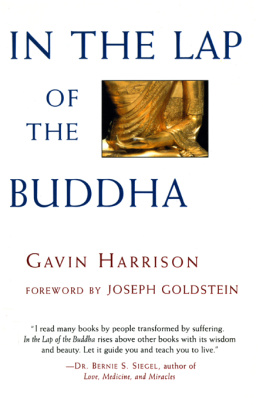Guide to
Gavin de Beckers
The Gift of Fear
Survival Signals That Protect Us From Violence
by
Instaread
Please Note
This is a companion to the original book.
Copyright 2016 by Instaread. All rights reserved worldwide. No part of this publication may be reproduced or transmitted in any form without the prior written consent of the publisher.
Limit of Liability/Disclaimer of Warranty: The publisher and author make no representations or warranties with respect to the accuracy or completeness of these contents and disclaim all warranties such as warranties of fitness for a particular purpose. The author or publisher is not liable for any damages whatsoever. The fact that an individual or organization is referred to in this document as a citation or source of information does not imply that the author or publisher endorses the information that the individual or organization provided. This concise companion is unofficial and is not authorized, approved, licensed, or endorsed by the original books author or publisher.
Table of Contents
Overview
The Gift of Fear by Gavin de Becker is a self-help book about assessing potential violence and staying safe across a range of environments. After violent episodes, observers often will remark that they didnt think the offender was capable of committing a criminal act, such as stalking, domestic abuse, or even assassination. Yet the perpetrator always sends out warning signals that precede violence, which are often noticeable in retrospect. These signals register in the moment, but often people ignore their intuition or choose to discredit it with logic. By trusting intuition and remaining aware of these predictors of violent behavior, people can take steps to limit potential threats in every context and situation.
Genuine fear is markedly different from a state of worry or anxiety. Although anxious thoughts can function like intuition, they dont indicate a real threat to personal safety. True fear, on the other hand, is distinctly all-consuming. In one case, a woman who was raped in her apartment felt an overwhelming sense of terror after her attacker left her bedroom. This marked the first time she felt truly afraid during the whole episode. She was suddenly certain that he was going to kill her. Later, she would see that she came to this realization by picking up on subtle signals including the fact that he had shut the window after the rape, presumably so that neighbors wouldnt hear him murdering her. But in the moment, she simply listened to her fear, which prompted her to sneak out of the apartment as her attacker was rummaging through her kitchen drawer, presumably for a knife. Knowing the difference between genuine fear and worry can increase safety and promote an overall feeling of security.
The Gift of Fear was published by Little Brown in 1997 and is a New York Times bestseller. It has been translated into 13 languages.
Important People
Gavin de Becker is the founder of Gavin de Becker & Associates, a consulting firm that works with celebrities and other individuals, as well as government, police departments, corporations, and other-large scale institutions, to evaluate the risk of violence and threats to safety. He is the author of several bestselling books including Protecting the Gift: Keeping Children & Teenagers Safe (And Parents Sane) (1999) and Fear Less (2002). Among his many accomplishments, de Becker has served twice on the Presidents Advisory Board at the US Department of Justice.
Key Insights
- Real fear is different from needless worry. Knowing the difference between the two can increase personal safety and a sense of overall security.
- Many people dont pay attention to their gut instincts because they are conditioned to ignore clear signals that something is wrong.
- Intuition is something that is always at work whether or not people realize it in the moment.
- When assessing a situation, look out for satellites, which are throwaway details that contain valuable information.
- To maintain safety, its important to understand alarming situations from the standpoint of the potentially dangerous person. Everyone is capable of violence.
- People who have suffered abuse and neglect in childhood are far more likely to become perpetrators themselves.
- To recognize a dangerous situation before violence occurs, stay alert to specific behaviors, such as someone who doesnt respect the word no or a stranger who offers a seemingly kind or grand gesture in a manipulative effort to create a sense of indebtedness.
- The most valuable element of a prediction is cataloguing the pre-incident indicators (PINs), such as the acquisition of a gun or threatening statements.
- In both personal and professional stalking situations, the best course of action is to communicate a clear rejection and then cut off contact.
Analysis
Key Insight 1
Real fear is different from needless worry. Knowing the difference between the two can increase personal safety and a sense of overall security.
Analysis
Persistent anxious thoughts do not often represent a real-life threat. A mans worries about his physical safety in his apartment may be triggered by a past event. Or perhaps his state of anxiety is related to another problem, such as not wanting to live in his cramped living quarters anymore. Meanwhile, real fear shows up as a loud and clear signal compelling people to take definitive action to protect themselves.
Paying attention to real fear can lead to life-saving actions. Worry, on the other hand, tends to create stress, contributes to an overall sense of insecurity, and does not strengthen personal security.
Key Insight 2
Many people dont pay attention to their gut instincts because they are conditioned to ignore clear signals that something is wrong.
Analysis
One of the biggest obstacles to listening to intuition is a fear of being judged by peers as irrational. Yet warning signals often manifest in a persons consciousness as irrational or paranoid hunches or suspicion. Even humor that has a loud ring of truth to it can flag a warning.
To illustrate how easy it can be to disregard intuition, consider the following example: a woman is about to enter a cab when she suddenly has a bad feeling about it. Instantly, she remembers a dream she had the night before. In the dream, she was in a yellow jeep cab just like this one. The cab got into an accident. But she is standing on the sidewalk with her recent ex-boyfriend, and so she brushes off her unease, blaming it on the emotional encounter she just had with her ex. It seems more convenient to get in the cab rather than wait to flag another one. Plus, she doesnt want to explain her feeling to her ex and risk having him think shes being oversensitive or irrational. So she gets in the cab and puts on her seatbelt. Ten minutes later, when the cab rear-ends another cara scenario nearly identical to her dreamshe regrets not paying attention to her intuition to get another cab. In retrospect, she realizes that she was also nervous about the speed of the cab before it pulled over to pick her up. She saw it jolt over a pothole without slowing down, but she was so distracted by her ex that she didnt pay these details further attention.
The womans story illustrates the gift of intuition and what can happen if the gift is refused or undervalued. In cases of potential danger, especially those tinged with foreboding, it is wise to listen to intuition, and then apply logic to the situationnot to use logic to ignore the details that add up to an intuition. Predictions are the result of intuition with logic applied to evaluate the threat.
Next page


















